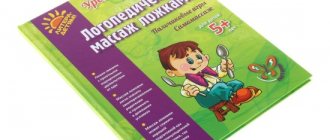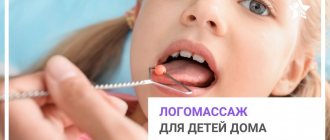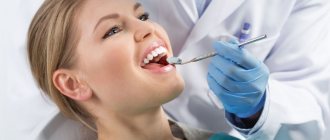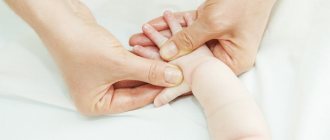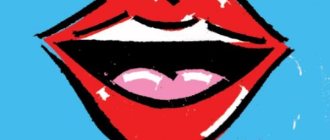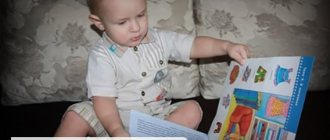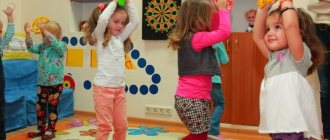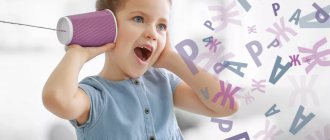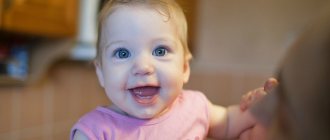What it is
Speech therapy massage affects skin secretion, normalizes nutrition of muscles and skin, has a positive effect on lymph circulation, and improves blood circulation in the soft tissues of the face. The most common types are:
- traditional;
- hardware;
- point;
- probe;
- independent;
- according to Dyakova.
Indicated for children with speech disorders. Helps normalize muscle tone and improves articulation. Included in work to correct pronunciation disorders. Parents can do speech therapy tongue massage at home, having received recommendations from a specialist.
Speech therapy massage. Types of speech therapy massagematerial on speech therapy on the topic
Speech therapy massage. TYPES OF Speech Therapy MASSAGE.
Correct, good speech is communication, self-expression, and a tool of cognition. In recent decades, the number of children with speech disorders, and with the most severe forms, has been steadily growing. In addition to children with a disorder of one or two sounds, more and more often there are children who have more than 10-12 sounds missing or distorted. Often added to this are confusions of sounds, their replacement and violations of the syllabic structure, that is, the child cannot reproduce words without errors and rearranges syllables. Simplifies consonant clusters, etc. Often there are also disturbances in the acquisition of the grammatical structure of the native language.
The causes of speech impairment lie, in addition to the pathology of pregnancy, childbirth and diseases of the first year of life, and in the successes of modern medicine. If earlier, some children simply would not have survived, now they are with us, but also with us and with them and their problems, and often not childish ones. Therefore, consultations with specialists are necessary, without which you can miss something that will later cause serious complications.
Everything in our body is interconnected - from the heels to the top of the head. Therefore, consultations with such specialists as:
ORTHOPEDIST. A large number of children with speech pathology have disorders of posture and foot alignment. It would seem, what does this have to do with speech? Very big. This includes correct breathing, correct vocal delivery, correct head position during speech, and prerequisites for a healthy life in the future. An orthopedist can recommend physical therapy, a swimming pool, and special shoes.
OTORENGOLOGIST. Even slight hearing loss must be excluded; cure diseases of the mouth and nasopharynx, if any.
PSYCHIATRIST. In order not to miss the delay in the formation of any mental functions necessary for learning (perception, attention, memory, thinking, imagination). He can recommend special classes for the development of individual cognitive processes.
ORTHODONTIST. Malocclusion, changes in the shape and position of teeth, shortened frenulums can interfere not only with articulation, but also lead to facial deformation. With defects in the oral cavity and dentofacial anomalies, children face a number of problems. The specialist may recommend special exercises, intraoral or vestibular plates, braces, cutting (plastic) of the frenulum.
OSTEOPATH. Often, speech problems are caused by a birth injury at the level of the cervical spine or asymmetry of muscle tone associated with the incorrect position of the bones of the base of the skull, to which more than three dozen muscles are attached. Correct pronunciation also depends on the shape of the sky. With the problems described, proper breathing and swallowing are disrupted, which causes respiratory and digestive dysfunction in children. An osteopath can help with these and many other problems.
“A speech child is a neurological child with concomitant speech pathology,” said Professor B.R. Yaremenko. therefore, one of the main specialists that parents of a child with speech impairment should contact is a NEUROLOGIST. It is the neurologist who must decide. Does your child need a massage and if so, what kind? whether medication, physical therapy, or anything else is needed.
Ideally, only after all these consultations should you go to a speech therapist. Usually the opposite happens: poor speech - we go to a speech therapist, not realizing that this is not an isolated problem, but the tip of the iceberg of the child’s problems. And the speech therapist already sends me to different specialists. They prescribe treatment, select the most effective methods, we expect results from them, and time - time for correction - is running out forever. Treatment and correction go in parallel. But this is not always good:
- the presence of a plate in the mouth interferes with articulatory movements, especially at the beginning of orthodontic correction;
- distracting a child for physical therapy, physiotherapy, a swimming pool, consultations, courses of treatment with various doctors leads to missed sessions with a speech therapist and a decrease in possible results.
Speech is a conditioned reflex. For its development, a physiological basis is necessary - the presence of unconditioned reflexes, normal hearing, healthy articulation and the nervous system. The work of a speech therapist without preparing this basis is often ineffective. Therefore, the entire range of consultations and treatment must be completed before classes with a speech therapist.
Massage in speech therapy practice is used to correct various disorders: dysarthria, rhinolalia, aphasia, stuttering, alalia. The correct selection of massage complexes helps to normalize the muscle tone of the organs of articulation, improves their motor skills, which contributes to the correction of the pronunciation side of speech. One of the founders of the domestic massage system is Professor I.Z. Zabludovsky. They proposed a method of facial massage, which has not lost its significance to this day.
Speech therapy massage techniques are differentiated depending on the pathological symptoms in the muscular system for speech disorders.
When performing speech therapy massage, you need to know all the contraindications. This:
- Skin diseases - fungal, pustular, herpes, cracks, as well as tumors, hematomas, allergies, sunburn, cancer;
- Infectious – sore throats, acute febrile conditions, ARVI, influenza, childhood infections, conjunctivitis, other infectious diseases;
- Dental – stomatitis and other infections of the oral cavity, any surgical interventions, tooth loss and extraction;
- Convulsive readiness;
- Nosebleeds and tendency to them;
- Nausea, vomiting;
- Excessive physical or mental fatigue;
- Enlarged lymph nodes;
- Edema of Quinte (allergic swelling of the tissues of external or internal organs).
In some cases, contraindications to the appointment of speech therapy massage are temporary and occur in the acute period of the disease or during an exacerbation of a chronic disease.
The following types of massage are used in speech therapy:
- Classic (firming or relaxing)
- Probe (probes or probe substitutes)
- Hardware
- Spot
- Self-massage
Massage should be differentiated:
- it is necessary to take into account the specifics of the defect (hypertonicity of the muscles of the face, lips, tongue, uncontrolled muscle twitching (hyperkinesis), features in the structure of the articulatory apparatus (for example, a shortened hyoid frenulum);
- The speech therapy massage scheme should be based on classical massage and the experience of fellow speech therapists who have developed special massage complexes;
- Massage techniques should be simple and accessible for parents of children with speech impairments;
- Massage techniques should not cause pain or negative emotions in the child.
In classical massage there are four main techniques, everything else is their modifications.
- Stroking. The procedure usually begins and ends with stroking; it is also used in the intervals between other techniques.
- Trituration.
- Kneading.
- Vibration: intermittent - with the hand being lifted from the surface of the skin (swinging, tapping). It stimulates the muscles; continuous – vibrations are transmitted without lifting the hand. She relaxes.
Movements vary in strength:
- Deep and slow – relaxing;
- Superficial and fast - tonic.
With reduced tone, techniques such as stroking, kneading, rubbing, patting, light vibration are used; for hypertonicity (spastic conditions), mainly superficial stroking and strong vibration are used.
A special type of speech therapy massage is probe massage. The purpose of probe massage is to normalize speech motor skills. The method is simple and effective. It makes it possible to purposefully influence the affected areas of the articulatory organs, activating and restoring their activity. Normalization of sound pronunciation is faster.
Speech therapy tools for tongue massage can be different. From specialized to simple, improvised items. At home, you can do speech therapy massage with spoons, a toothbrush, a spatula, etc.
Acupressure is one of the types of reflexology, consisting of a mechanical effect on biologically active points (zones) according to indications: relaxing or stimulating. Acupressure has a significantly greater selectivity of effects, allowing you to simultaneously relax some muscles and stimulate others (with central spastic paralysis). Acupressure techniques are selected strictly individually. Acupressure is performed daily 3-4 times a day. To increase the effect of acupressure, elements of cryotherapy are used, i.e. exposure to cold point by point.
Hardware massage is carried out using vibration, vacuum and other devices. Before each use, the vibrating massager attachments should be thoroughly washed with soap and water and disinfected with medical alcohol.
Non-traditional speech therapy technologies include self-massage. The use of self-massage in complex correctional work to overcome speech disorders significantly increases its effectiveness. Self-massage in speech therapy correction is part of a complex work. It can also be used to prevent dysarthric disorders.
Self-massage is a massage performed by the child himself using hands or aids (spoons). These are also dynamic articulation exercises that produce an effect similar to massage.
The basic techniques of self-massage are the same as for classical massage.
Requirements for performing the exercises:
- Painful effects during self-massage are not allowed, because the massaged tissues reflexively tense, thereby sharply reducing the effect of the procedure.
- While performing the exercises, pay attention to the range of movements, speed, accuracy, and coordination. Exercises should be carried out purposefully; it is not the quantity of exercises that is important, but the quality.
- As children become familiar with the techniques, hand and finger movements will become more coordinated and accurate.
Methodology:
- Children learn self-massage techniques under the guidance of a speech therapist. When teaching children self-massage, the teacher-speech therapist demonstrates each technique on himself and comments on it. Children perform the massage technique independently, with visual control (mirror).
- Before performing self-massage techniques, the child should take a calm, relaxed position.
- The duration of one self-massage session for children can be 5 - 10 minutes.
- It is recommended to perform each movement no more than 4-6 times.
- When the child has mastered the techniques of self-massage, it is possible to perform movements accompanied by a poetic text or specially selected music (fast for activation, slow for relaxation).
The form of implementation can be either individual or subgroup
LIST OF RECOMMENDED READINGS
1. Arkhipova E.F. Corrective work with children with cerebral palsy. Pre-speech period. M., 1989.
2. Badalyan L.O., Zhurba L.T., Timonina O.V. Cerebral palsy. Kyiv, 1988.
3. Blyskina I.V., Kovshikov V.A. Massage in the correction of articular disorders. St. Petersburg, 1995.
4. Bortfeld S.A., Rogacheva E.I. Therapeutic physical education and massage for cerebral palsy. L., 1986.
5. Danilova L.A. Methods for correcting speech and mental development of children with cerebral palsy. L., 1977.
6. Danilova L.A., Stocka K., Kazitsina S.N. Features of speech therapy work in children with cerebral palsy. St. Petersburg, 1997.
7. Dedyukhina G.V. Yanshina T.A., Moguchaya L.D. Speech therapy massage and physical therapy with children 3-5 years old suffering from cerebral palsy. M., 2001.
8. Dyakova E. A. Speech therapy massage: Textbook. allowance. M., 2003.
9. Ippolitova M.V., Babenkova R.D., Mastyukova E.M. Raising children with cerebral palsy in the family: A manual for parents and educators. M., 1980.
10. Keschan E.V. On the question of some aspects of the development of expressive and impressive speech in children of the second year of life suffering from cerebral palsy // Questions of speech therapy. M., 1978.
11. Kozyavkina N.V. and others. System of intensive rehabilitation of children with cerebral palsy: new opportunities for the correction of speech disorders // Defectology. 2002. No. 5.
12. Speech therapy / Ed. L.S. Volkova, S.N. Shakhovskaya. M., 2003.
13. Speech therapy. Methodological heritage / Ed. L.S. Volkova: In 5 books. M., 2003. – Book. I: Disturbances of the voice and sound-pronunciation side of speech: In 2 hours - Part 2. Rhinolalia. Dysarthria.
14. Malofeev N.N. Characteristics of vocabulary in students with cerebral palsy // Defectology. 1985. No. 1.
15. Mastyukova E.M. Therapeutic pedagogy. M., 1997.
16. Mastyukova E.M. Speech disorders in students with a hyperkinetic form of cerebral palsy and medical justification for speech therapy measures // Defectology, 1972. No. 2.
17. Mastyukova E.M. Physical education of children with cerebral palsy. M., 1997.
18. Mastyukova E.M., Ippolitova M.V. Speech impairment in children with cerebral palsy. M., 1985.
19. Nikitina M.N. Cerebral palsy. M., 1979.
20. Features of the psychophysical development of students in special schools for children with musculoskeletal disorders / Ed. M.V. Ippolitova. M., 1985.
21. Plotnikova V.I. The use of gaming techniques for the development of articulatory motor skills in primary schoolchildren with cerebral palsy // Defectology. 1989. No. 2.
22. Prikhodko O.G., Moiseeva T.Yu. Children with motor disorders: correctional work in the first year of life. M.. 2003.
23. Semenova K.A. Treatment of movement disorders in cerebral palsy. M., 1976.
24. Semenova K.A., Mastyukova E.M., Smuglin M.Ya. Clinic and rehabilitation therapy for cerebral palsy. M., 1972.
25. Semenova K.A., Stepanchenko O.V., Vinogradova L.I., Panchenko I.I. Method of artificial local hypothermia in the correction of dysarthria in children with cerebral palsy // Defectology. 1990. No. 2.
26. Simonova N.V. Characteristics of vocabulary in preschool children with cerebral palsy // Defectology. 1985. No. 3.
27. Smirnova I.A. Speech therapy diagnostics, correction and prevention of speech disorders in preschool children with cerebral palsy. Alalia, dysarthria, OHP. St. Petersburg, 2004.
28. Smirnova I.A., Stocka K. Features of the manifestation of articulatory disorders in children with cerebral palsy // Defectology. 1995. No. 5.
29. Spirova L.F. Features of speech impairment in pseudobulbar dysarthria // School for children with severe speech impairment. M., 1961.
30. Trubnikova N.M. Diagnosis and correction of writing disorders in primary schoolchildren suffering from cerebral palsy and mental retardation // Speech therapist. 2005 No. 1.
31. Khalilova L.B. Features of the acquisition of lexical-semantic patterns of language by students with cerebral palsy // Defectology. 1984. No. 5.
32. Shipitsina L.M., Mamaichuk I.I. Psychology of children with musculoskeletal disorders. M., 2004.
Speech therapy massage for children at home
Only a specialist can prescribe this method. You cannot prescribe procedures for your child yourself. These procedures will relieve increased tone of the facial and articulatory muscles. To conduct sessions at home, you will need a cloth napkin and special finger pads. This procedure is carried out in several steps:
- The child relaxes as much as possible. You need to take the tongue with your fingers, twirl it and gently tap on it.
- It is easy to tug the tip by pressing it with two fingers from below and one finger from above.
- Take the middle part of the tongue, lift it one by one and pull it forward. It is fixed in this position for 2-3 seconds.
- We hold the tongue near the lips with our hand. With the other hand, squeeze the tongue to the root. Then carry out the reverse movement. This algorithm is repeated several times.
- Hold your tongue near your lips with one hand. With the fingers of your other hand, squeeze its body pointwise to the root. Repeat forward movements in the opposite direction.
- The tongue turns to the left edge. In the same way it turns in the other direction.
- Tap the child's lips with light, soft movements. Then roll them up and pull them towards the nose.
This massage should be performed at least once or twice a day for two weeks. The duration of the session depends on the age and character of the baby. The first lesson should last 5 minutes, but no more. The child must gradually get used to this unusual procedure. The massage time increases gradually; after 7-10 days, this procedure should last 15 minutes.
Small children can stand no more than 10 minutes; older children can easily sit for 20 or more. For preschoolers, it will be enough to warm up the tongue muscle for 10-15 minutes a day and select several types of movements. The next day the movements change to others.
In what cases is it recommended?
The indicator for choosing the type of speech therapy massage is the state of facial and articulatory motor skills. First, the speech therapist looks at the muscles when they are in a relaxed state. For this, it is best for the child to be in a lying position.
If the muscles have normal muscle tone, they will be slightly tense, and the skin will be soft and elastic. All manipulations do not cause discomfort. If the tone is increased, there is greater tension, manipulations are carried out with difficulty; if it is low, the muscles are in a sluggish and flabby state. For the first option, you need to do a massage for relaxation, and for hypotension, a stimulating one.
Also, the indication for this procedure is the presence of paresis and paralysis. In this case, one corner of the lips may be higher than the other or the jaw may be shifted to the side. But the specialist begins to work from the most preserved areas. The affected areas must be treated carefully to minimize possible discomfort.
To determine the condition of the facial and articulatory muscles, examine:
- condition of facial muscles and skin;
- state of articulatory motor skills;
- condition of the soft palate;
- pronunciation side of speech.
Based on the diagnostic results, the speech therapist decides whether the child needs a course of speech therapy massage and what techniques he will use in his work.
Correction of pronounced sounds by probe massage of the tongue
The most common speech disorder is dysarthria. The baby has problems with articulation and pronunciation of many sounds. With this diagnosis, speech therapists prescribe probe massage.
This method accelerates the correct formation of sounds and improves the functioning of the articulatory muscles of the face, improving the child’s fine motor skills. Without this procedure, correction of dysarthria may take 5-10 years. The method does not require special conditions. It can be done by a speech therapist who has special knowledge and skills.
However, this is an adjunct to therapy and not a panacea for all speech problems. It prepares the ground for the development of speech skills in the baby. Other stages of therapy should be carried out in parallel.
If the massage is performed incorrectly, the child may develop fear and fear of instruments. Some speech therapists act very rudely. After this, the baby may refuse the procedures.
Contraindications to probe massage
Massage courses are prescribed by a neurologist after a thorough examination. Sessions cannot be held in a number of cases:
- in the presence of epilepsy of various forms;
- during somatic and infectious diseases;
- for stomatitis, gingivitis, skin diseases, herpes;
- increased pulsation, high blood pressure, poor health.
- nausea, vomiting.
Before the session, the specialist must examine the child and make sure that the procedure is safe. To solve complex speech problems, a set of measures must be developed. It should also include special medications and physiotherapy.
Probe massage according to Novikova
Massage according to Novikova is a simple procedure. This method uses multiple probes with different shapes. They are used to have an effect on certain areas of the oral cavity - tongue, cheeks, lips, palate.
Before starting, a speech therapist or specialist examines the child. He must determine the extent of the damage. The specialist then decides how many sessions will be needed to correct the problem.
How to perform
When prescribing a course of therapy, it is important not to miss sessions and attend them all. The course of treatment can last 2-3 weeks. Every 40-50 days the course is repeated again. In some simple cases, one course may be required.
Before the procedure begins, the speech therapist allows the child to see the instrument. This way the child will not develop fear. If the atmosphere in the office is pleasant, the speech therapist carries out the procedure carefully and carefully, the child gets used to the procedure the first time. Several probes are used, each with their own purpose.
Fork probe
Use a sharp tip to prick the surface of the tongue, cheeks, and lips. This provokes muscle contractions. Movements should be short. At the same time, active muscle contraction occurs. The movements are neat and short. The probe is installed at the desired point and a rocking motion is made. After this, the tool is rotated at one point for 5 seconds.
"Eight"
The probe is intended for lips, cheeks, tongue. The muscles of the tongue must be rubbed up and down with movements similar to loops, pressing on it.
Probes large, medium and small sleds
They differ in their size, area of influence, and pressure force. These devices stimulate the fibers of the tongue, cheeks, and lips.
Hatchet
A speech therapy massage of the lips, tongue, and cheekbones is performed. The muscles of the tongue are pressed and sliding movements are carried out along them. This device normalizes muscle tone and affects mobility.
Cross
This tool is designed to work with a child's language. When pushing movements, contractions of his muscles occur.
Pusher
It is necessary to alternate pressure and relaxation of the tongue. Each phase lasts at least 5 seconds.
Effective types of logomassage
The following types of speech therapy massage are recognized as the most popular.
- Classic or manual massage. It is carried out by a specialist using hands and various devices (toothbrush, spatula). Patting, stroking, rubbing, and light vibration are used.
- Probe massage according to Novikova. This type of influence was proposed by speech therapist Elena Viktorovna Novikova. This is done using tools (hatchets, forks, etc.).
- Acupressure , during which a specialist acts on points associated with the speech apparatus. Stimulation of these points promotes speech activation.
- Massage with vibration devices.
- Self-massage , during which the baby massages his own facial muscles.
All types of massage (except the last one) are performed by qualified specialists. If it is not possible to regularly conduct classes with a specialist, parents can do logomassage. To do this, they need to undergo training in the necessary massage techniques.
Depending on the final goal, massage is divided into 2 types:
- calming (for hypertension, paresis);
- activating (for cerebral palsy).
Hand massage for children for speech development
If the baby is under three months old, this type of massage must be agreed upon with a neurologist. If there are no diseases or neurological disorders, the procedure comes down to stroking, rubbing and warming up each finger individually. After three months, objects with protrusions can be used. They need to be rolled in your hands. Such movements are carried out on both sides of the palms. You can use pencils, nuts, balls as objects. Equipment after a year:
- the baby must hook the fingers of the same name from different hands;
- the child holds his fingers tightly, the parent must separate them at this time;
- use the child’s hands to massage each finger;
- pinch your fingers between your middle and index fingers and stretch them out, at the same time completely twisting them.
In order for the child to understand how to carry out the movements, the parent must show and help the child himself.
Features of stimulating massage
The speech therapist chooses this option if the muscles are flabby, flabby, most of them are uninvolved in facial expressions and articulation. All manipulations are aimed at restoring their activity and strengthening. Massage actions are performed at a fast, intense pace.
The activating effect is created by rubbing, kneading and strong vibration. In this case, intense movements are alternated with relaxing strokes. Of course, there should be more stimulating manipulations than relaxing ones. The algorithm of actions is the same as during the relaxing procedure.
Tongue massage for hypertonicity
In this case, it is necessary to conduct relaxing massage sessions. It should start from the shoulders and neck area. Once these muscles are sufficiently relaxed, you can begin directly massaging the tongue. The procedure algorithm is as follows:
- Place the baby in a comfortable position. The child should feel comfortable.
- Adults should wash their hands thoroughly.
- Prepare a toothbrush or finger tip.
- Carry out movements from the tip to the center.
- It is necessary to carry out stroking movements over the entire area of the muscle, lightly tapping it.
- Use a brush or nozzle to draw the letters “U”, “Z”, “W”. Each letter must be written five times.
- Use the parent's finger to make spiral and zigzag movements along the surface.
With reduced tone, you need to massage the root zone. It is necessary to carry out reflex movements. This article will help you master a relaxing oral massage with a simple toothbrush. The technique of performing the exercises is discussed in the video instructions at the end of the article.
What you will need
To conduct a speech therapy massage of the child’s tongue, place the child on a straight surface (a tight cushion under the neck) or sit comfortably. Cover your face with a clean, thick cloth wrung out in warm water for 5 minutes. The set of tools at home is minimal:
- Brush.
- Disposable gloves.
- Sterile wipes or a whisk to secure the tongue.
It is held gently, without pressing, without causing discomfort. Make sure your child is able to swallow. We must not forget about hygiene. Each exercise is performed at least 10 times. Speech therapy tongue massage is especially indicated for a child at home with dysarthria, increased salivation and functional voice disorders.
Warm-up
To relax the spasticity of the articulatory muscles, you need to run the back of the brush along the tongue from root to tip. The massage is relaxing and therefore all movements should be slow and smooth. The exercise must be done 10 times. Also, you need to remember about swallowing.
Sun
We carry it out using a brush and its bristles. This movement is made about the middle of the tongue in different directions, as if drawing rays. It is important to be careful. There is no need to press the bristles on your tongue so as not to injure it.
Christmas tree
The exercise is done simply: the silhouette of a tree is drawn, from root to tip, and a branch, from the middle of the tongue to the periphery. All manipulations must be slow.
Breeze
We make movements first from the left, then in the direction from the root of the tongue to the tip, without pressing and repeating again. Also, there is no need to insert the brush too deeply so as not to cause a gag reflex in the child. And also, do not forget that all movements are repeated 10 times. Now we are moving in a different direction, from right to left. Going lower, from the root you need to move to the very tip.
Rain
This exercise is also done using bristles, slowly and carefully, from root to tip. There is no need to hit the tongue too hard and forget about the tip, which needs to be processed at the very end. For the next step, you need to use the back of the brush. The same movements are made as in the rain, but with the back, smooth side.
Contraindications
Logomassage has a number of contraindications:
- stomatitis, gingivitis and other diseases of the oral cavity;
- conjunctivitis, blepharitis and other eye diseases;
- general infectious diseases (chickenpox, influenza, measles and others);
- herpetic infection;
- pulsation of arteries and veins;
- swollen lymph nodes;
- skin diseases (dermatitis, lichen);
- exacerbation of any somatic disease;
- violation of the integrity of the massaged skin (abrasions, cuts);
- bruises on the face;
- vascular wall disorders, thrombosis;
- oncological diseases;
- fungal infections of the skin;
- the child’s fear of the specialist or devices;
- hypersensitivity of the baby's skin.
The local neurologist must issue parents a certificate stating that there are no contraindications for speech therapy massage. An experienced and qualified speech therapist will definitely require this document from parents.
